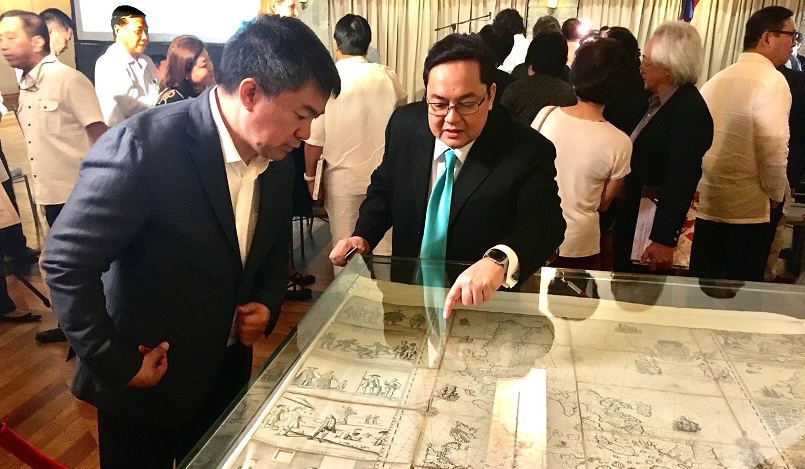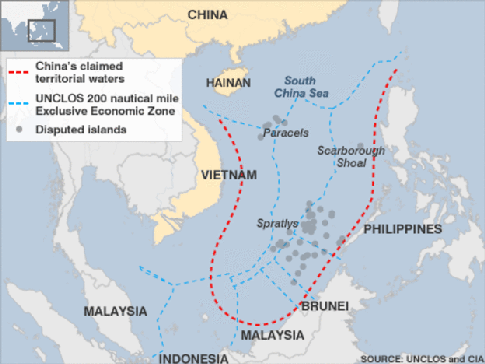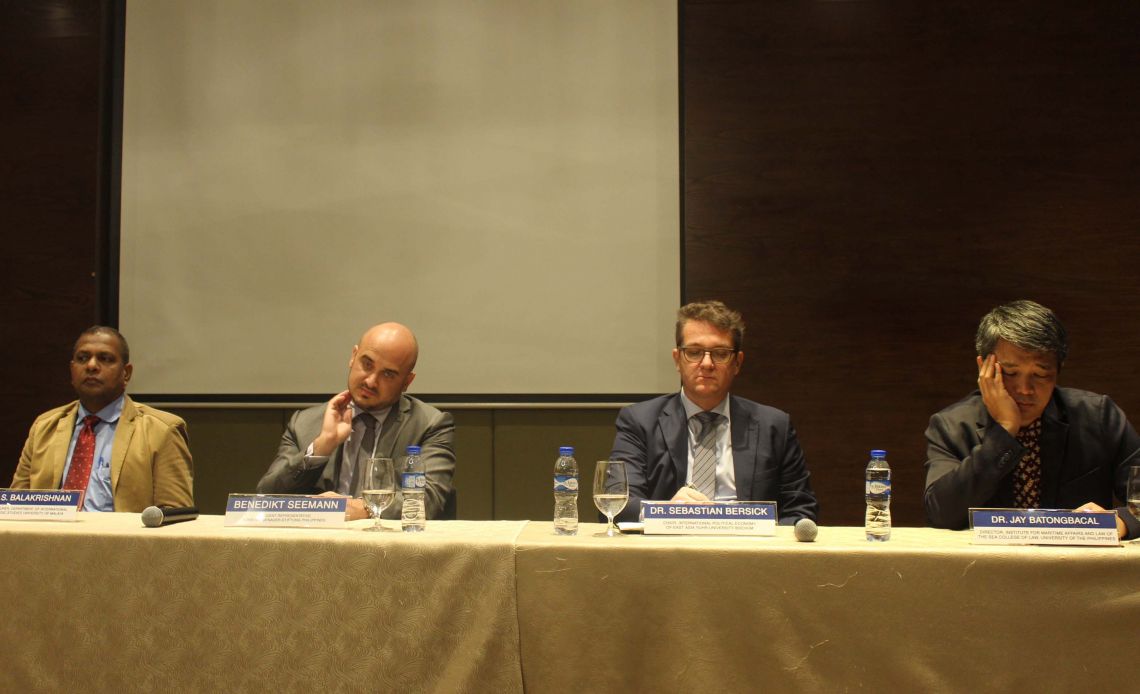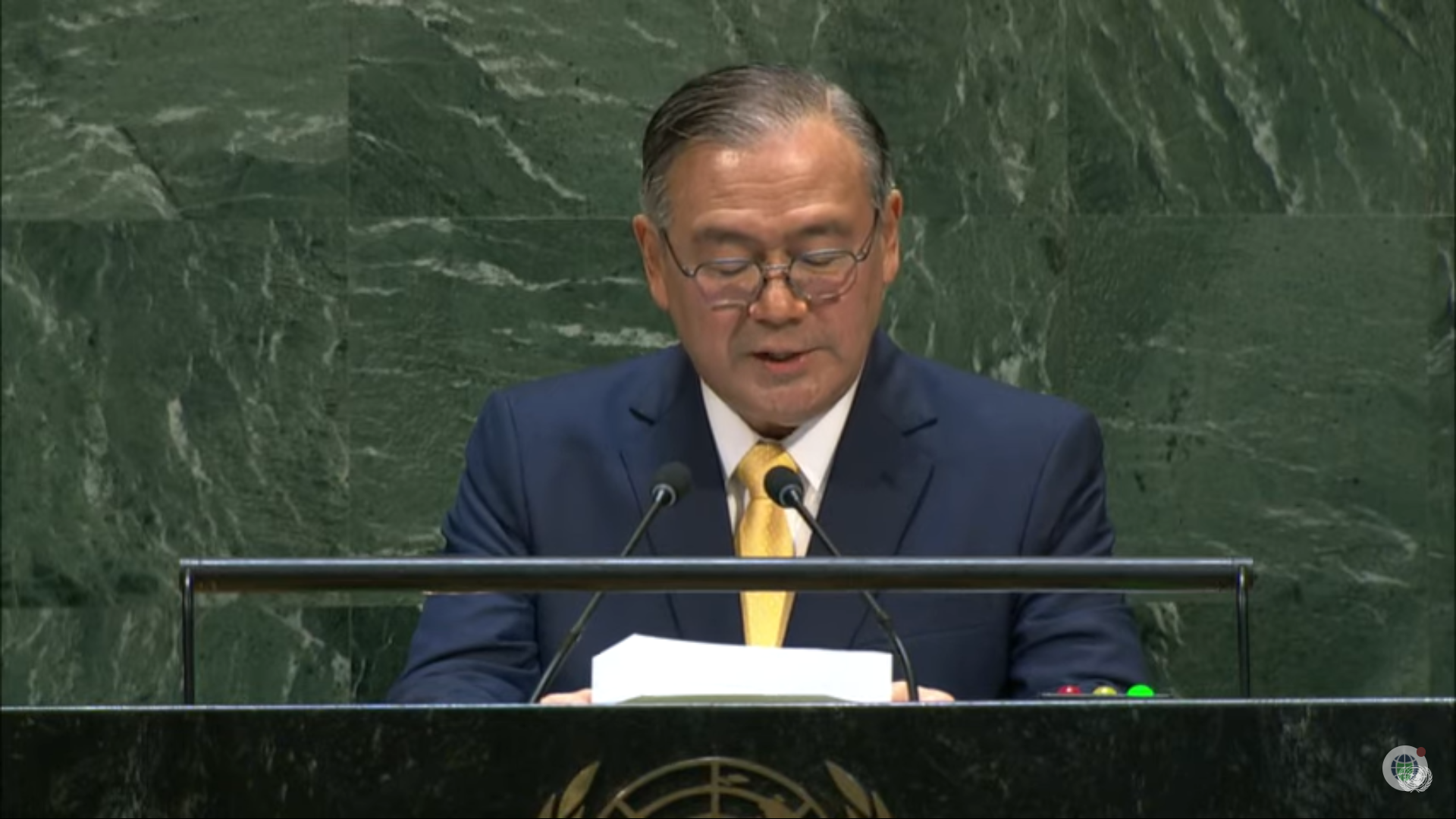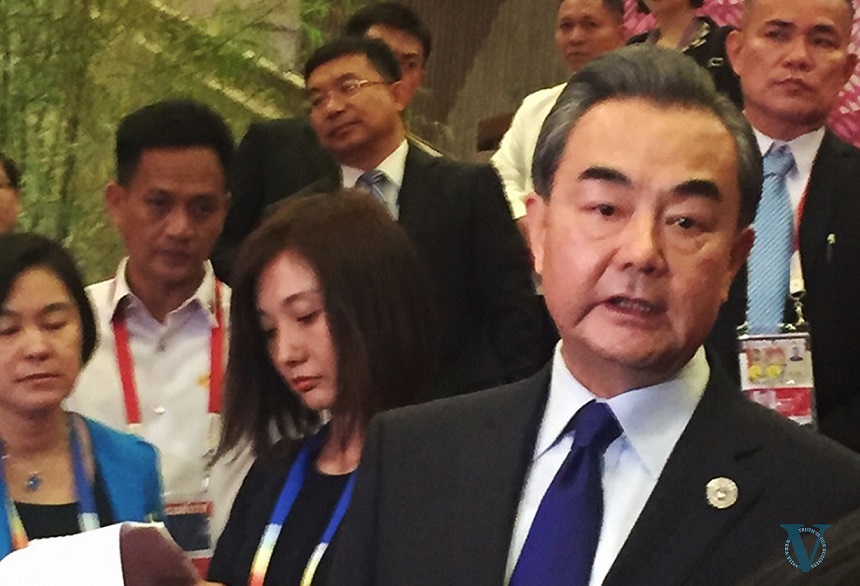
Reporters interview Chinese Foreign Minister Wang Yi after ASEAN-China meeting at the PICC. Photo by Charmaine C. Deogracias.
China and the Association of Southeast Asian Nations (ASEAN) have adopted a framework for a Code of Conduct (COC) in the South China Sea, but its character and mechanics are still up for negotiation, Chinese Foreign Minister Wang Yi said. One thing is certain, though: it will not cover bilaterally disputed areas such as the Scarborough shoal, also known as Bajo de Masinloc, which is claimed by both Beijing and Manila.
This developed as the joint communiqué of the 50th ASEAN ministerial released in Manila Sunday “took note of the concerns by some ministers on the land reclamations and activities in the area which have eroded trust and confidence, increased tensions and may undermine peace, security and stability in the region.”
The communique also emphasized the “importance of non-militarization and self-restraint in the conduct of all activities by claimants and all other states, including those mentioned in the DOC that could further complicate the situation and escalate tensions in the South China Sea.”
(Please click here for the 46-page joint communique)
Wang said the 10 ASEAN countries don’t have a consensus yet on some of the issues that would be covered by the COC. “But one thing is clear, whether it is the 2002 DOC or the future COC all the 11 countries, once they put their signatures on the document, that’s what they will do. And they need to observe the document, “ Wang said.
When asked if the COC will cover bilaterally disputed areas, such as Paracels between Vietnam and China and Scarborough shoal between China and the Philippines, Wang said: “Regarding bilateral disputes, according to Article 4 of the DOC (Declaration on the Conduct of Parties in the South China Sea) they should be address directly by parties involved thru dialogue and consultations.”
“China and the Philippines have this bilateral consultation mechanism, the first meeting was very good, successful. By the end of this year they have a second meeting. As long as we commit to dialogue and consultation and international law including UNCLOS (United Nations Convention on the Law of the Sea), we will be able to stabilize the situation and find a way out,” Wang said.
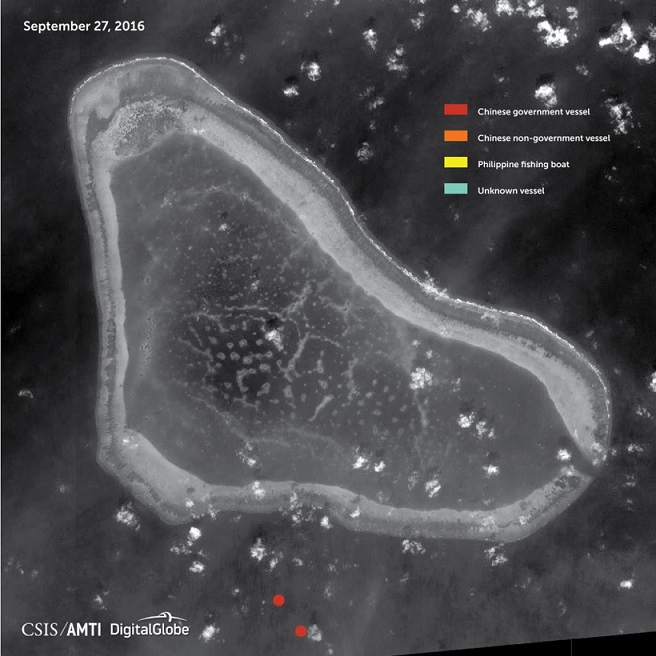
Scarborough Shoal. Photo from CSIS/AMTI
Article 4 of the 2002 DOC states that “the parties concerned undertake to resolve their territorial and jurisdictional disputes by peaceful means, without resorting to the threat or use of force, through friendly consultations and negotiations by sovereign states directly concerned, in accordance with universally recognized principles of international law, including the 1982 UN Convention on the Law of the Sea.”
A Bilateral Consultative Mechanism (BCM) between the Philippines and China started last May, with the two agreeing to meet regularly on current and other issues of concern to either side on the South China Sea. Both sides also agreed to explore other areas of cooperation.
The establishment of the BCM was agreed after China and Philippines resumed the annual bilateral vice-ministerial political consultation that was suspended after the Philippines filed a unilateral compulsory arbitration case before the PCA at The Hague in 2013.
The Framework that was adopted on Sunday outlines the preamble and general provisions, the principles, basic undertakings and final clauses that will constitute the code.
The objectives of the code are to establish a rules-based framework containing a set of norms to guide the conduct of parties and promote maritime cooperation in the South China Sea; to promote mutual trust, cooperation and confidence, prevent incidents, manage incidents should they occur, and create a favorable environment for the peaceful settlement of the disputes; and to ensure maritime security and safety and freedom of navigation and over-flight.
The basic undertakings of the code based on the agreed framework will include the duty to cooperate, promotion of practical maritime cooperation, self – restraint or promotion of trust and confidence, prevention of incidents through Confidence building measures and Hotlines, and the management of incidents through establishment of hotlines.
“China and Asean countries have been working together for the past year and we fully recognize that thanks to our (concerted) efforts, the apparent situation in the South China Sea is showing positive momentum and we also fully recognize the trend toward relaxation in the South China Sea situation. We have agreed upon and we approved the COC framework draft, and this is an important outcome of our joint effort. This has also laid a solid foundation for the next stage – substantive consultations on the COC,” Wang said.
The foreign ministers of ASEAN and China on Sunday also agreed on a three-step process to start the negotiations of an actual code – the announcement of the adoption of the framework, convening a meeting at the end of this month to discuss the modalities for the negotiations of the Code and announcement of the start of COC negotiation by the leaders of ASEAN and China in the summit in November.
But Wang for his part said, the third step will depend on the stability in the South China Sea, “if there is no major disruption from outside parties.”
“When the situation in the South China Sea is generally stable, and if there is no major disruption from outside parties, then we will consider during the November leaders’ meeting, we will jointly announce the official start of the COC consultations,” Wang said.
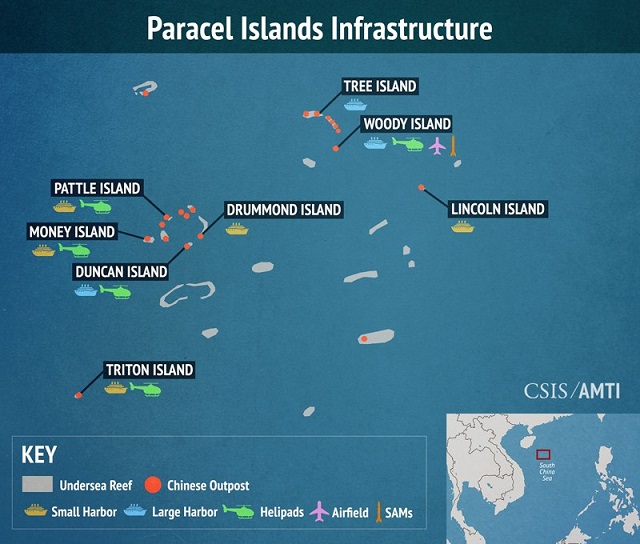
Paracels. Photo from CSIS/AMTI
But China is confident that “ASEAN-China relations will move from a period of rapid growth to a period of maturity. And further to build on that, to move further to comprehensive strategic partnership.”
“China and ASEAN have the ability to work together to maintain regional peace and stability and we will work out regional rules that we mutually agreed upon so as to open up a bright future for our future relations,” Wang said.
At the start of the ASEAN ministerial meetings chaired by the Philippines on Friday, Vietnam pushed for a strongly worded statement on the South China Sea, to include at the very least an expression of “serious concerns” over recent developments there such as China’s land reclamation activities in the disputed area. It also wanted a legally binding code
The contentious issue of the South China Sea has hounded ASEAN meetings in recent years. During a 2012 ministerial meeting in Cambodia, no joint communiqué was issued after top diplomats failed to reach a consensus, a first in ASEAN’s history. The Philippines then tried to push for a text to be included in the statement on the South China Sea, but this was opposed by the chair: Cambodia.
Tensions in the South China Sea have been heightened by the Scarborough shoal incident between Philippine and Chinese coast Guard in 2012, the Philippine’s filing of an arbitration case against China in 2015, and China’s continuing land reclamation activities in disputed areas.
Apart from the Philippines, the other ASEAN states with territorial and maritime claims in the South China Sea are Vietnam, Malaysia and Brunei. The South China Sea covers three big island groupings, the oil rich Spratlys chain, the Paracels and Macclessfield Bank that covers Scarborough shoal or Huangyan Island or Bajo de Masinloc or Panatag shoal.

